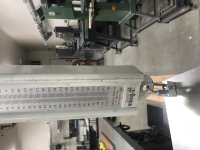I finally am getting around to installing my Skybeacon and Skysensor. I removed the Grimes nav lights and they were held on with 8-32 machine screws. 6-32 is what fits in the new lights.
The wingtips were riveted on so it’s a bigger job than I would like to do right now to remove them and replace the Nutplates.
Has anyone ever filled and existing Nutplate with epoxy and drilled and tapped? Or potentially used a 4-40 helicoil ? They only need to torque to 10 inch pounds.
The 8-32 machine screws are just slightly too big to fit through the SkyBeacon.
Any options appreciated.
The wingtips were riveted on so it’s a bigger job than I would like to do right now to remove them and replace the Nutplates.
Has anyone ever filled and existing Nutplate with epoxy and drilled and tapped? Or potentially used a 4-40 helicoil ? They only need to torque to 10 inch pounds.
The 8-32 machine screws are just slightly too big to fit through the SkyBeacon.
Any options appreciated.





